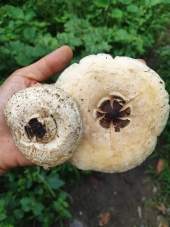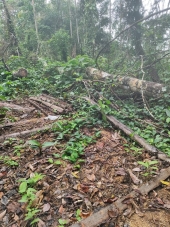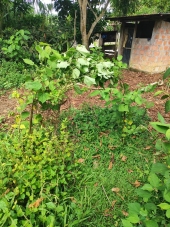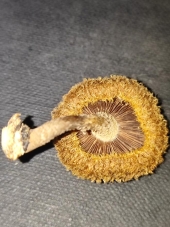


M Ljin wrote:Someone mentioned that that mushroom may have been a deadly species of Lepiota, containing amatoxins; and that they can cause diarrhoea, which gets better and then later, up to a few days, liver failure sets in. This person fervently recommended that you seek out medical assistance as soon as possible.
For the sake of continued life, it may be extremely beneficial to take milk thistle seed, or its extract, silymarin, which may help. It may be life saving, and if the medical system there is like here the doctors may not give it to you because it’s an herb.
I have not personally dealt with amatoxin poisoning but have read about it.







M Ljin wrote:That looks like what my book shows. Did you take a spore print? My book says it should be white.
It says “not edible although Brazilian Indians are reported to eat it boiled”. One could say the same about beloved acorns, or morels, or milkweed, or any number of excellent food plants!—So may need special processing?
